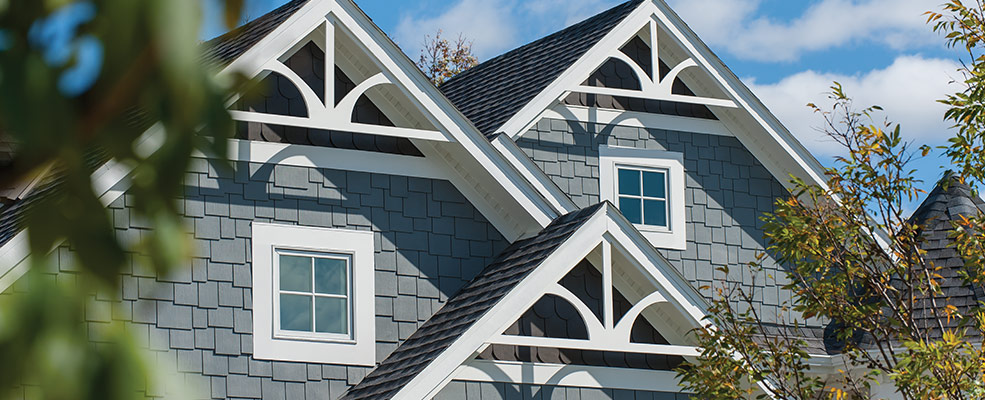

Once you’ve carefully chosen your trim, it’s wise to take the time to learn about the necessary steps and precautions to ensure that you get the beautiful finish you’re looking for — and not a poorly installed job that will lead to costly future repairs. Ply Gem Trim and Mouldings installs just like wood, but requires special treatment in a few ways. PVC expands and contracts more than wood with hot or cold temperatures, so it’s vital that your installer knows how to properly join, fasten and space your trim. Once it is installed, and installed right, you’ll have the great-looking trim you wanted and it doesn’t contain or absorb moisture, so it won’t rot or warp, paint will last longer and it won’t attract pests like termites.

Your Cellular PVC trim can be cut using the same blades as wood. It shouldn’t be cut with plywood or metal cutting blades. There may be rough edges if the blade is creating too much friction or if the board isn’t properly supported. These should be rasped and sanded to restore smoothness.
For safety, a dust mask and safety goggles are necessary.
Standard wood drill bits should be used, and not drill bits made for rigid PVC.
Routing should be done with a sharp, carbide-tipped bit to give the trim crisp, clean edges.
Each fastener should penetrate at least 1 ½” into solid wood substrate. If there’s a layer of nonstructural substrate on top, such as ½” of foam, a longer fastener is required. Each fastener should be no closer than ¾” from the board’s end, and no farther than 2”. Fastener heads should be flush with the trim surface or slightly indented, not protruding. Trim should be fastened with stainless steel screws or nails to prevent corrosion. Galvanized screws or nails are acceptable. Staples, brads, wire nails, fine-threaded wood screws or ring-shank fasteners are not.
Cellular PVC contracts in cold temperatures and expands in heat, so it’s important that your installer follows best practices to save you future maintenance from movement. These practices include:
Make sure your installer uses a recommended adhesive on longer runs of trim. The following allow maximum working time before drying and provide excellent bonds: Extreme Adhesive PVC TrimWelder™, Bond & Fill® Structural.
Sealants and adhesives alone are never enough to fasten trim to your home. Silicone adhesives should not be used.
Bead Board and Sheet are perfect for fascias, soffits and ceilings, but should never be used in load bearing situations. Installers should be familiar with local building codes before installing Bead Board and Sheet in spanned applications. Proper spacing and fastening is a must.
Nail holes should be filled with sealant designed for PVC products. No silicon caulk should be used. Once the sealant has set up, the hole should be sanded over for a smooth finish.
Painting Cellular PVC isn’t required, but should you chose to, be sure to choose a 100% acrylic latex paint specifically designed to work with vinyl products. Darker colors can lead to heat distortion, so if you’re going dark, use a paint designed to counter this problem, such as Sherwin-Williams® VinylSafe™ paints. The surface of the trim should be clean and free of debris like dirt, oil, mold or mildew. An airless sprayer or paint gun system gives the most consistent finish. A roller or brush may also be used.
Your Cellular PVC trim can be heated and bent to form unique design elements like arches and curves. Pieces of trim wider than 6” should not be heat bent. The process of heating Cellular PVC should be done carefully and gradually to prevent irregularity and discoloration.
Cellular PVC trim should be handled with care to avoid damage. It should be stored on a level surface before installation and protected from excessive heat. Storing on asphalt on a hot day can cause overheating, for example. If stored outside, the trim should be covered with a tarp to keep it clean and protected.
If the trim becomes dirty or stained, it can be cleaned with a mild soap and water mixture and a soft bristle brush. A nylon brush may be used to scrub stubborn stains.
Click here to download the Ply Gem Trim and Mouldings Installation Guide